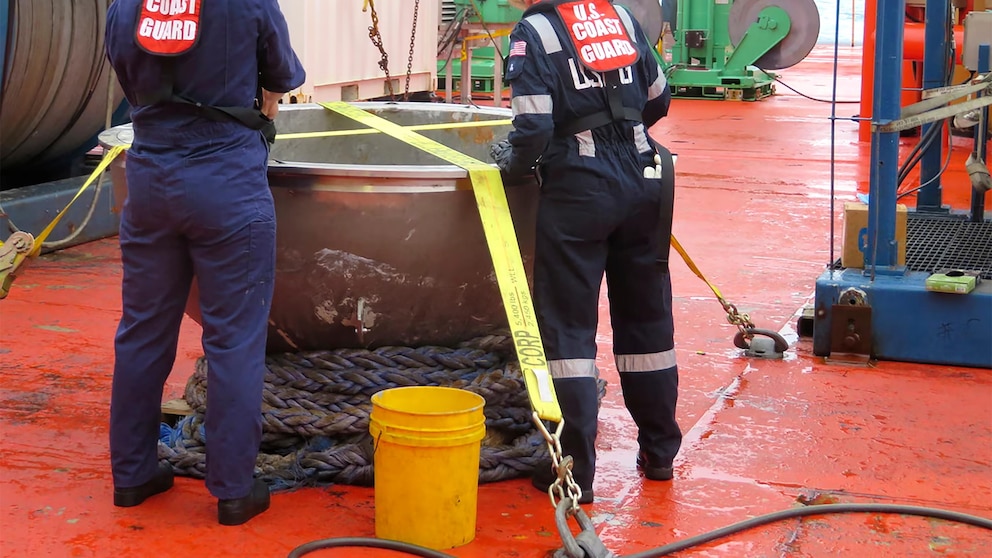The Coast Guard has recovered remaining debris, including presumed human remains, from a submersible that imploded on its way to explore the wreck of the Titanic, killing all five onboard, deep beneath the Atlantic Ocean’s surface, officials said Tuesday.
The Coast Guard said that the recovery and transfer of remaining parts was completed last Wednesday, and a photo showed the intact aft titanium endcap of the 22-foot (6.7-meter) vessel. Additional presumed human remains were carefully recovered from within Titan’s debris and transported for analysis by U.S. medical professionals, the Coast Guard said.
The salvage mission conducted under an agreement with the U.S. Navy was a follow-up to initial recovery operations on the ocean floor roughly 1,600 feet (488 meters) away from the Titanic, the Coast Guard said.
The new materials were offloaded at an unnamed port.
The Coast Guard previously said it recovered presumed human remains along with parts of the Titan after the debris field was located at a depth of 12,500 feet (3,800 meters).
Investigators believe the Titan imploded as it made its descent into deep North Atlantic waters on June 18.



Coast Guard is made to do salvage missions, many more important than this one. The cost of doing a mission like this is not large compared to the cost of acquiring and maintaining the equipment and crews necessary. It’s good practice, good PR, and may give technical insight that will be useful to civilian or military engineers working on deep-sea submersibles.
Basically, we’ve already spent 99% of the money necessary before even considering whether or not to undertake a particular salvage mission. You already bought the car - what’s a drive down to the next state over, really? Gas and some wear and tear?
I know it’s not even a rounding error in terms of budgets, but that’s really my point. I know enough about operations planning that in terms of actual dollars (not in the “a billion here, a billion there, and pretty soon you’re talking about real money” sense of the term dollars) that this operation was a significant expense, especially totaling from incident onset forward. I get that’s it’s already budgeted, it’s a great opportunity for hands on training on that rare class of work, and so on.
My point is that we’re prioritizing this as an ongoing operation over those other potential funding needs. That is, we are prioritizing the level of expense for this USCG training and recovery mission over what would be a proportionally massive investment in communities. Even from a purely economics standpoint, investment into communities pays back at a higher rate than more military expenditure.
I mean, it’s only estimated at a few million. 1.8 million so far, last I read. Even by community investment standards, that’s peanuts. I don’t know that “2 additional long-term teachers for one school in a low COL area” is really that much of a ‘proportionally massive’ investment in communities. And god help whoever has to make the decision who in the whole of the country gets that additional 1.8 million.